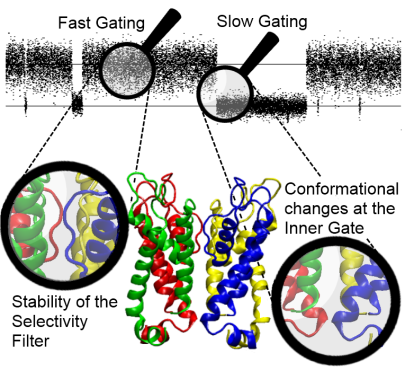Ion channels often gate faster then can be directly resolved with the available recording bandwidth. The analysis with extended beta distributions allows to reconstruct the true single channel current in the open state and the rate constants of the fast gating from the filtered open channel noise.
The method is an extension of the beta distribution analysis developed by FitzHugh (1983) and Yellen (1984), which calculated the theoretical current distribution by analytical means, heavily relying on simplifying assumptions.
Our program “bownhill” greatly extends the applicability of the analysis by generating the theoretical current distributions via simulations. This allows the use of any Markov model, noise and filter characteristics. A review of the method and its application can be found in Schroeder (2015).
The program package (Windows(R) only), contains a short tutorial and sample files. Download “bownhilltutorial”. You are welcome to try out and use the program. If you use it in publications, please cite Schroeder, 2015, Channels. 9: 262-280.
References:
FitzHugh, R. 1983. Statistical properties of the asymmetric random telegraph signal, with applications to single-channel analysis. Math. Biosci. 89: 75–89.
Yellen, G. 1984. Ionic permeation and blockade in Ca2+-activated K+ channels of bovine chromaffin cells. J. Gen. Physiol. 84: 157–186.
Schroeder, I., and U.-P. Hansen. 2009a. Interference of shot noise of open-channel current with analysis of fast gating: patchers do not (yet) have to care. J. Membr. Biol. 229: 153–163.
Schroeder, I., and U.-P. Hansen. 2009b. Using a five-state model for fitting amplitude histograms from MaxiK channels: beta-distributions reveal more than expected. Eur. Biophys. J. 38: 1101–1114.
Schroeder, I. 2015. How to resolve microsecond current fluctuations in single ion channels: The power of beta distributions. Channels. 9: 262–280.




